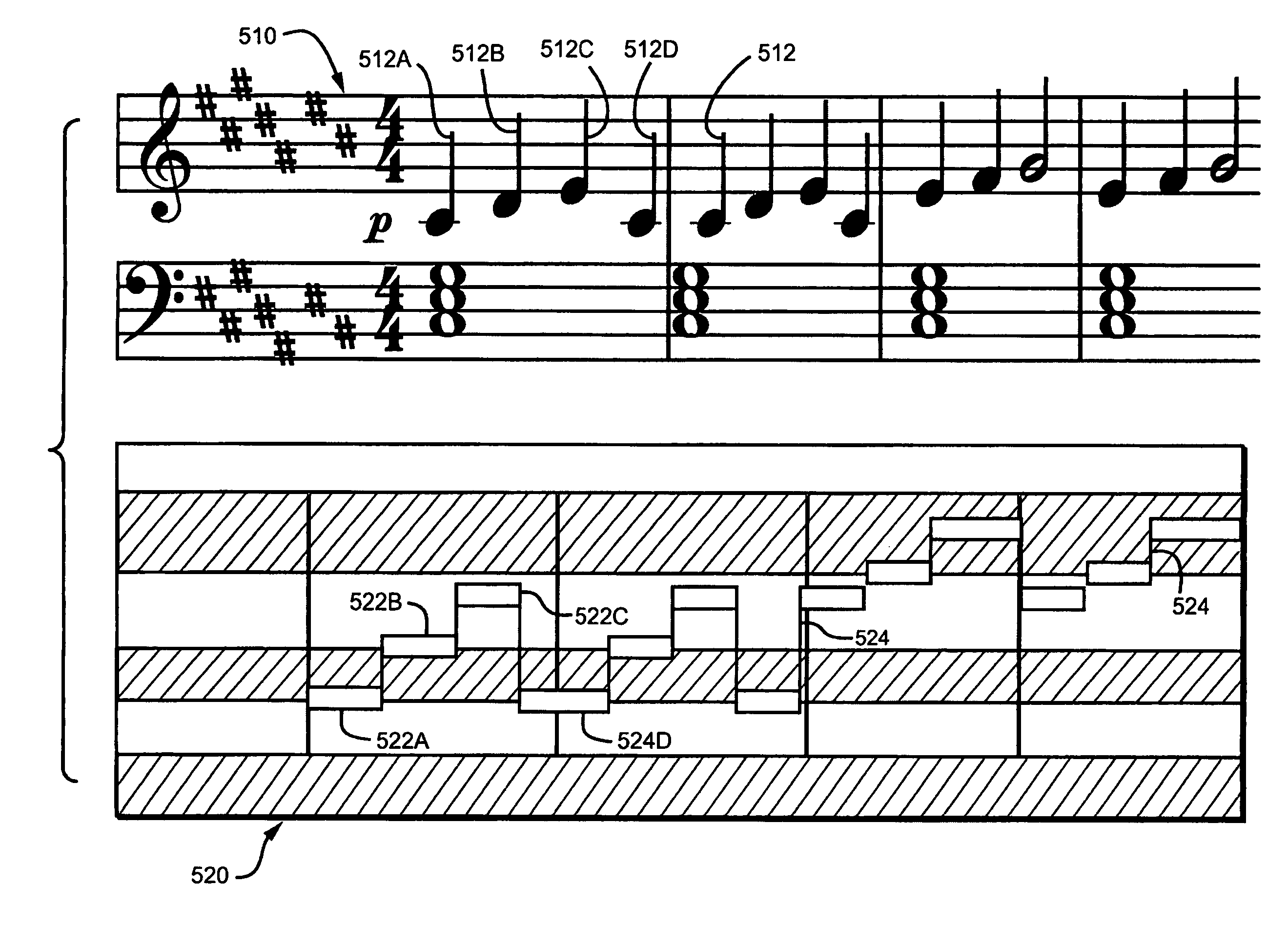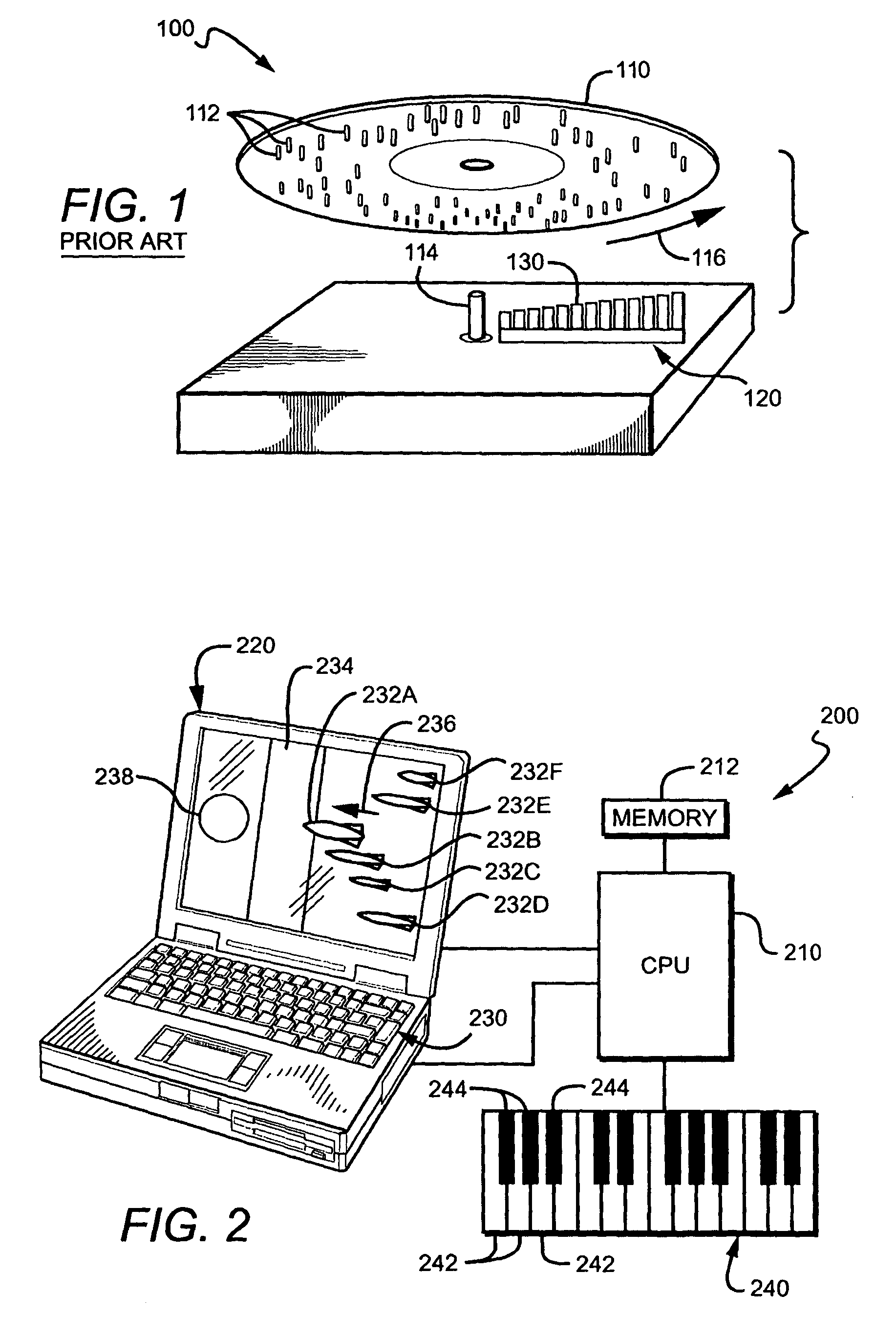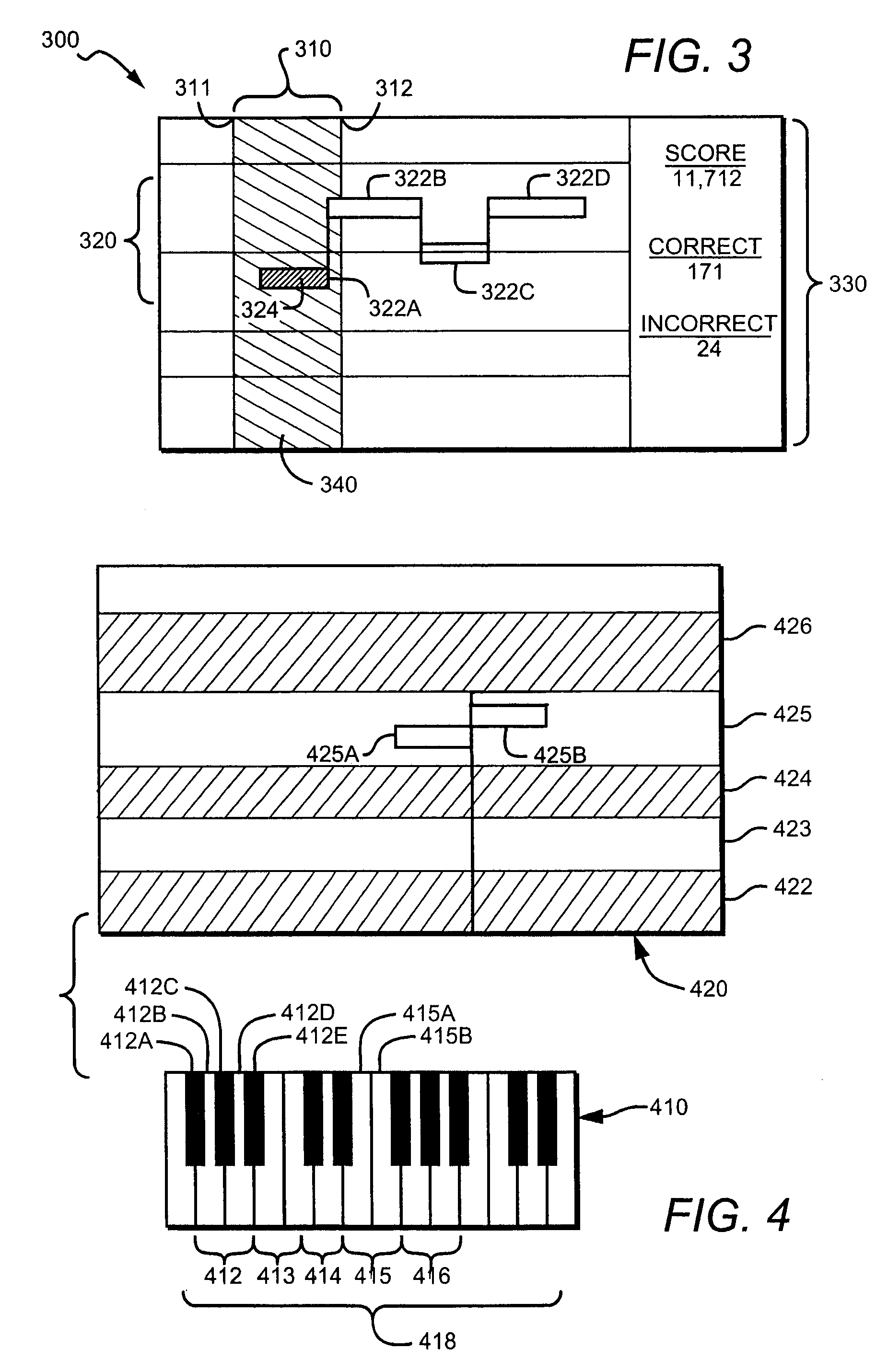Music teaching device and method
a teaching device and music technology, applied in the field of music teaching, can solve the problems of learning even more difficult, learning to produce desired notes, and a great deal of difficulty in remembering which keys, strings, or other elements produce which notes, so as to simplify the keyboard tablature, improve feedback, and simplify the effect of note recognition techniques
- Summary
- Abstract
- Description
- Claims
- Application Information
AI Technical Summary
Benefits of technology
Problems solved by technology
Method used
Image
Examples
Embodiment Construction
[0025]FIG. 1 is a prior art system of a music box 100. The music box 100 comprises a disk 110 having a plurality of spaced tines 112, and a row of metal pins 120 having various lengths correlated with various notes. As the disk 110 rotates about a spindle 114 in the direction of arrow 116, individual pins 130 contact individual tines 112 in a particular sequence and timing, causing the pins 130 to be “plucked”. Vibration of the plucked pins reproduces a musical score. A player piano works in substantially the same way.
[0026]Music box technology is very old, and there are doubtless numerous variations known in the field. Significantly, however, all music boxes are based on the limitation that the order and spacing of the notes is entirely fixed. Other than variations in how fast the disk or cylinder rotates, which consequently affects the tempo of the music produced, there is no flexibility at all that would give rise to “expression” of the player. In other words, individual notes ar...
PUM
 Login to View More
Login to View More Abstract
Description
Claims
Application Information
 Login to View More
Login to View More - R&D
- Intellectual Property
- Life Sciences
- Materials
- Tech Scout
- Unparalleled Data Quality
- Higher Quality Content
- 60% Fewer Hallucinations
Browse by: Latest US Patents, China's latest patents, Technical Efficacy Thesaurus, Application Domain, Technology Topic, Popular Technical Reports.
© 2025 PatSnap. All rights reserved.Legal|Privacy policy|Modern Slavery Act Transparency Statement|Sitemap|About US| Contact US: help@patsnap.com



